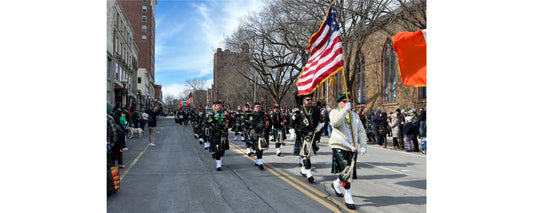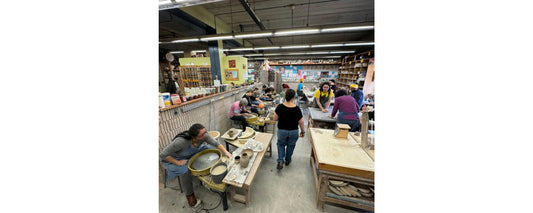The days before Christmas in New Haven are a good time to ponder how New Haven Christmases were before.
It seems the explicit moral values of the season weren’t so different than they are today, even hundreds of years ago. “Gratitude to benefactors, and forgiveness of injuries are two of the most pleasing sensations an ingenuous mind is susceptible of” begins “A Christmas Pie,” an essay written by someone signing off as “The Cook” in the December 27, 1771, edition of the Connecticut Journal, and New Haven Post-Boy. The submitter’s accompanying note to the publishers reads, “Gentlemen, if you have nothing better to serve up for the Christmas week, the foregoing Dish is at your service,” echoing a third familiar Christmas value: generosity.
A fourth? Moderation. The January 12, 1786, edition of The New-Haven Gazette published a poem remarking “on the common salutation, ‘A merry Christmas and a happy New-Year’”:
So merry at Christmas are some, they destroy
Their health by disease, and by trouble their joy.
At Christmas, mix wisdom with mirth and ne’er fear,
You’ll secure the wish’d blessing—a happy new year.
On December 25, 1788, the Gazette published an account written by a man who experienced a Christmastime phenomenon that still resonates today: finding a path to charity through humbuggery. For the past week, he wrote, he’d been “pestered in every street… by numberless women and children singing what they called Christmas Carrols”—or what he called “the grossest buffoonery upon the most sacred subject,” marred by artless and silly lyrics. Walking past “a poor woman with two children bundled at her back, and one in her arms,” who sang from lyric sheets held in hand, he gave her money in exchange for all the sheets—not out of kindness, mind you, but “to prevent her giving the same offence to any other.”
The central character of “A Christmas Ditty,” a poem published in an 1807 edition of the New Haven-based Connecticut Herald, wasn’t even that lucky. A newly orphaned girl forced to beg to survive,
She warbled strains of genuine woe,
In hope to catch the ear of pity,
Her little heart’s pulse beating low,
She sweetly sung her simple ditty—
“Oh, Fortune’s fav’rites, great and good,
Afford an helpless orphan food;
For Christmas comes but once a year,
And when it comes it brings good cheer.”
But sometimes a morality tale, even a Christmas one, works better without a happy ending, and this one breaks your heart even 200 years later:
In vain thus flow’d her tuneful breath—
Great folks sometimes have little feeling—
Poor child! the clay cold hand of death
Benumb’d her frame, and hush’d her thrilling…
Instead of kids begging in the streets, today Christmas tends to conjure thoughts of kids begging their parents for iPhones or PlayStation 5s, all backed by big holiday marketing campaigns. But the holiday season in New Haven wasn’t always so focused on gifts. The earliest local newspaper ad I found mentioning Christmas appeared in the December 19, 1809, edition of the Herald, when a shop called Shipman & Hawley advertised “Christmas Wines and Fruit,” highlighting inventory like Madeira and currants. Two Christmases later, in an an issue published December 24, 1811, two more advertisers got into the act. One of them was a merchant named Edmund Sherman. Under the simple headline “Christmas,” he listed wares including “fresh Nutmegs,” “a large assortment of fresh teas” and “50,000 Segars” (cigars).
But the first holiday ad I could dig up that explicitly induced gift-oriented spending, on items beyond the kinds you might procure for Christmas dinners and celebrations, appeared in the Herald about a year later, on December 22, 1812. Under the heading “Dry Goods for Christmas,” local trader John H. Jacocks used the allotted space to present a fictional account of a woman persuading her husband to buy new clothes for the family. “Do, my dear, let us live like other folks,” she says. “Our children ought to appear neatly dressed at Christmas; you certainly want a handsome Coat—and you cannot wish to have me seen in this Gown.”
The narrative reads like a radio ad, maybe a TV spot, doing its Tiny Tim-sized part to change Christmas in New Haven from what it was—a blend of moral improvement, family time and thanksgiving—to what it is—a blend of moral improvement, family time and gift-giving.
But hey, as far as the preservation of centuries-old cultural customs goes, two out of three is a Christmas miracle.
Written by Dan Mims. Image features clippings from cited newspaper editions. This updated story was originally published on December 24, 2014.







